Diwali 2022: India celebrates the festival with a dazzling display of lights
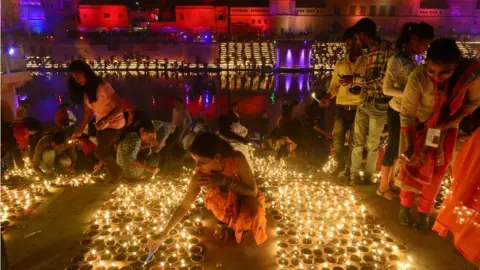 Getty Images
Getty ImagesIndia's streets and homes are lit up with colourful lanterns and glowing lamps as millions celebrate the Hindu festival of Diwali.
But the celebrations are also sparking concerns about air pollution, including in the national capital, Delhi.
A time for feasts, prayers and fireworks, Diwali is one of the most important festivals in India. It is known as the festival of lights as people illuminate oil lamps or candles to symbolise the triumph of light over darkness and good over evil.
People illuminate their homes with oil lamps and draw rangolis - traditional designs made using colourful powders - outside their doors to welcome good luck and positivity into their lives.
Families gather to offer prayers, light fireworks and enjoy festive meals. People visit friends and family and exchange sweets, gifts and good wishes.
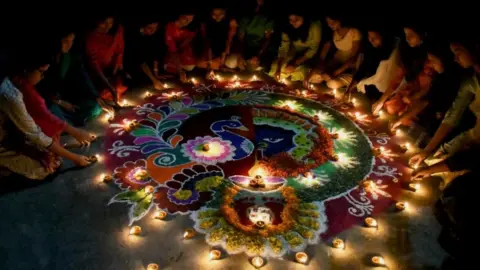 Getty Images
Getty Images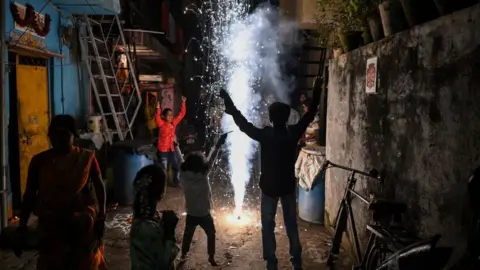 Getty Images
Getty ImagesThe exact dates of the festival change each year and are determined by the position of the moon, but it typically falls between October and November. This year, Diwali is being celebrated on Monday.
For the past two years, due to the Covid-19 pandemic, festivities were held with restrictions or were cancelled altogether. However this year, with restrictions being lifted, people are celebrating the festival with gusto.
The widely-celebrated festival also brings with it concerns about the rising levels of air pollution.
Despite governments in several states imposing partial or complete bans on firecrackers, thousands of people continue to light them, causing thick plumes of smoke to pollute the air.
 Getty Images
Getty Images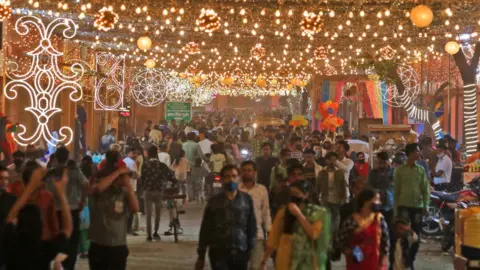 Getty Images
Getty ImagesIn Delhi - the world's most polluted capital - fireworks during Diwali worsen the air quality, which is already quite poor in the winter months as farmers in the neighbouring states of Punjab and Haryana burn crop stubble to clear their fields.
Like in previous years, this year too the Delhi government has banned firecrackers to curb air pollution. Those lighting firecrackers could be jailed for up to six months and fined 200 rupees ($2.41; £2.15).
 Getty Images
Getty Images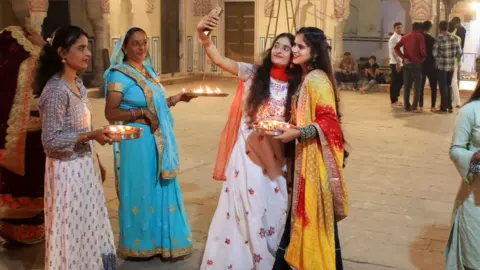 Getty Images
Getty ImagesAll images subject to copyright

Read more India stories from the BBC:
- India's virtual stars whose real faces you won't see
- Can a non-Gandhi Congress chief take on India PM Modi?
- 'Good guy' Binny is world's richest cricket board chief
- India PM Modi's government okayed rapists' release
- India inquiry after men crash women's college event
- Why drugs made in India are sparking safety concerns
- Indian boy king's warm friendship with British Queen
- The man who made burgers and pizzas popular in India

